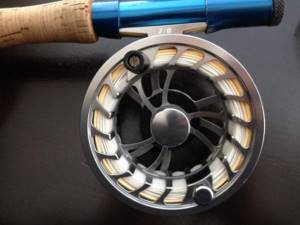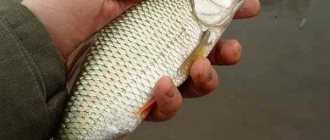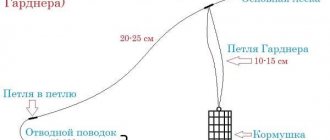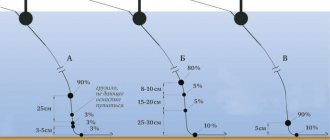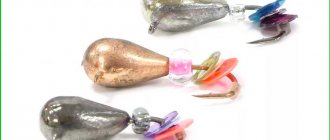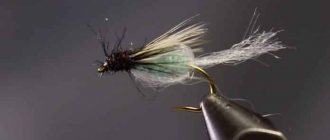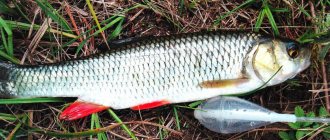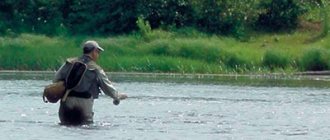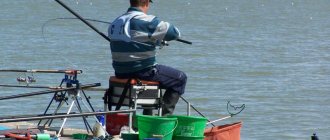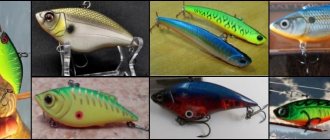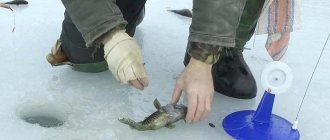TOP popular products for fishing
– buy with good discounts for personal use and as a gift to friends and acquaintances.
Buy quality products at affordable prices in the best fishing online stores
. Give gifts to yourself and your loved ones!
we are in social networks
– subscribe to us on Facebook, Youtube, Vkontakte and Instagram. Stay up to date with the latest site news.
Fishing knots used in fly fishing
- Option Duncan or Nail Less.
Classic fastening of backing to fly line. Simple and at the same time effective connection.
- Loop for backing and leader using fly line.
This is a separate diocese of an elite squad of fly fishers. Specific fastening of the cord without using a loop at the end.
Arbor knot.
A knot for fishing line or backing if necessary to connect to the reel spool. One of the simplest options for beginners – fly fishers.
- Combination for connecting monofilament line and braided line (SHOK LEADER KNOT).
This option was spotted by fly fishing enthusiasts. Compactness and decent load capacity attracts attention. The ease of passing through the rod's guides plays an important role.
- Duncan loop.
An effective loop knot. Peculiarity. The effect is achieved by connecting small flies in fly fishing.
- Additional Mounting Options.
- Option: backing to the reel
- Attaching backing to fly line
- Attaching the leader to the fly line
- Attaching the leash to the leader
- Fly attachment.
You can read about all types of fishing knots and individual fastening options on the main page of the section:
Fisherman's knots
Good fishing online stores
will allow you to purchase any
fishing goods
at competitive prices!
Follow us on social networks
– through them we publish a lot of interesting information, photos and videos.
Popular sections of the site:
The fisherman's calendar will allow you to understand how all the fish bite depending on the time of year and month.
The fishing gear page will tell you about many popular gear and devices for fishing.
Fishing baits – we describe in detail live, plant, artificial and unusual ones.
In the bait article you will get acquainted with the main types, as well as tactics for using them.
Learn all the fishing lures to become a real fisherman and learn how to choose the right one.
Baits used
How does the bulldozer tackle for grayling work?
In fly fishing, lures made from various artificial and natural materials are used. Fly fishing lures are divided into several main classes:
- dry flies;
- emagers;
- nymphs;
- streamers.
You can fish with dry flies throughout the warm season, when there is an increased concentration of all kinds of insects in the air. Emagers should be used in the spring, during the active emergence of mayflies and caddisflies. Nymphs imitate water-dwelling insects and work well throughout the year. Streamers are designed for catching predatory fish and are excellent for fishing in cold water. Every fly fisherman should have a certain set of fly fishing flies with which he could fish in any conditions.
Fly fishing flies
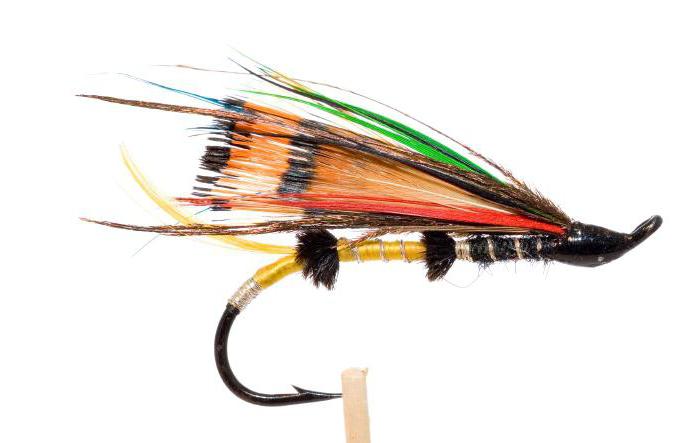
It is better to practice flying with wet and dry flies. In terms of standard sizes, the most convenient numbers are from 3 to 6. Too small types of baits less than 3 numbers should be excluded immediately. To test casting, flies are not needed at all. You can limit yourself to using a cotton swab. This is especially important because the front sights wear out in a short time of use. Accordingly, if fishing gear is equipped with such bait, then immediately after use it must be dried. A special approach is needed for feathers, which should be straightened with tweezers and in hot water. If possible, it wouldn't hurt to treat them with steam. In order not to spoil the fly during the first time of fishing, it is better to purchase high-quality models from the universal line - they are the most resistant to different fishing conditions.
Fishing technique
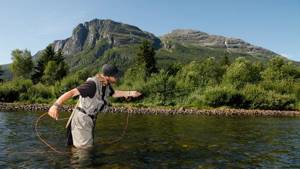
Successful fly fishing requires great skill. You need to make the fish believe that the fly you are throwing is a tasty bait that the fish cannot resist. To do this, you need not only to understand well what exactly needs to be done, but also to train long and hard in order to achieve success.
At the first stage, it makes sense to spend your time observing the life of the reservoir where you are going to fish. You need to take a closer look at what kind of fish behaves and what exactly it prefers to eat.
Next, in accordance with your considerations, you need to select exactly the fly that will give the highest chance of getting results.
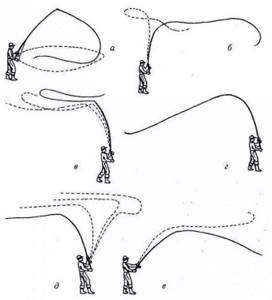
When fishing, try to have different types of flies that you might like on that body of water. It is advisable to prepare at least two specimens for each species in case the bait is lost.
Remember that the bait does not have to copy the appearance of a particular insect to the smallest detail. It is much more important that the movement of the bait matches the style of the insect in question.
Trout can grab the bait and then swim away unnoticed. Therefore, it is important to be alert at all times and keep your tension tight, constantly watching it so as not to miss the fish.
In some cases, simulating a bite when fishing with a nymph can help. If the fish swims up, you need to pull the bait 15 centimeters. This may attract these fish.
In some cases, trout can be provoked into chasing your bait. If the fish gets carried away, it may swallow the hook before you even hook it.
Front sight selection
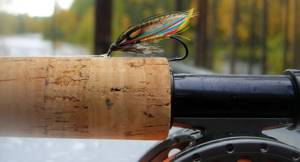
Sometimes a fisherman believes that choosing a particularly effective fly will provide an almost complete chance of success in fly fishing. Experienced fishermen rather believe that this gives no more than a twenty percent chance of success. Eighty percent of success comes from good fly technique.
It is important that the fly is clearly visible both to the fish and to the fisherman himself. To do this, it is convenient to choose the color of the fly in contrast to the color of the water. For dark water, a light fly is suitable and vice versa.
Fly fishing knots
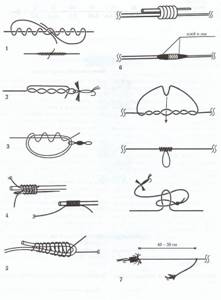
To attach various elements of fly fishing gear, it is customary to use certain nodes, which were described above. They have proven their effectiveness in practice, which has led to their widespread use.
Fly fishing, where it all began
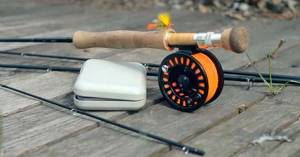
Fly fishing is fishing with artificial bait - a fly . At first, only trout and salmon were caught using this method. But today many other fish are caught this way. But even today this method is less popular than fishing with a spinning rod or a float rod. Because fly fishing gear is more expensive than other fishing methods. But if you want not just to fish, but to get beautiful and elegant fishing, then you need to choose only fly fishing.
This method of fishing has already existed for several centuries, so in 1496 the abbess of the monastery Juliana Bernes wrote her treatise on fly fishing. Which describes fishing methods and artificial flies similar to insects that fish feed on. They were then made from fur, feathers, and wool. These materials are still relevant for the use of flies. Rods were then made of wood, and cords were made of flax or horsehair, which were soaked in fat. Fly fishing was also considered a hobby for the nobility. Every nobleman had to be able to catch in this way. But in America, fly fishing has become a more common form of fishing, and it has been made available to everyone. Probably because the method of casting a fly rod is similar to the blows of a shepherd's whip. But this is probably just a version.
Knots for tying a hook
The Palomar knot is familiar to almost all beginners. It is used when tying the swivel to the main line. It is used to connect the twister heads with hooks and eyes. But due to the fact that it is knitted on a fishing line, which is folded in two rows, it is larger in size than other connections and also makes the leash shorter.

The Crawford knot is a basic classic crochet knot. Its purpose is to tie hooks with an eye. It is simple and reliable, the load capacity is 93%!, it is used for both braid and monofilament.
A bayonet knot is used to connect a hook to a monofilament line, but it is untied on a braided line.
“Fisherman’s Eight” and “Canadian Eight” - show a sufficient guarantee when attaching a hook with an eye to a fishing line. These knots can be easily untied.
A bayonet knot is used to connect a hook to a monofilament line, but it is untied on a braided line.
“Fisherman’s Eight” and “Canadian Eight” - show a sufficient guarantee when attaching a hook with an eye to a fishing line. These knots can be easily untied.
The Claw Knot (aka Clinch) is ideal for tying a hook with thin braided wire. But it does not hold well on hooks and lures with thick wire. Not recommended for winding rings.
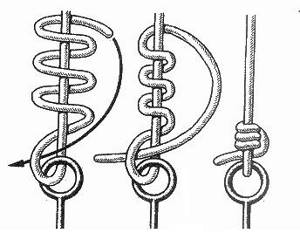
The “Step” knot is often used when connecting hooks to a “scapula”. These hooks are durable due to the fact that they are made using forging. The strength of this unit is close to 100%!
The Twisted Dropper Loop knot allows you to tie a hook into a loop in the middle of the fishing line. Often used in sea fishing. It is easy to change one hook for another, or bait for bait.
The Centauri Knot knot practically does not deform the fishing line and increases the reliability of your entire tackle.
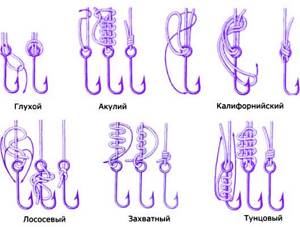
The Hangman's Knot is one of the strongest knots for lures and hooks.
The Snelling A Hook is a pure hook knot that holds the line very firmly and is somewhat more difficult to knit than others.
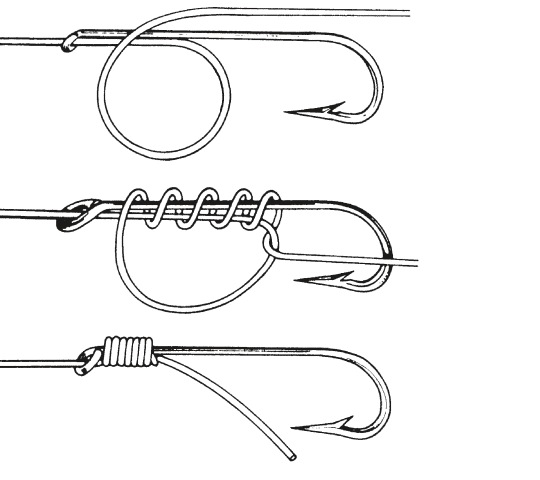
The turtle knot is a simple and very strong knot for tying eye hooks. Suitable for tying a hook in a drop shot rig.
The Twisted Dropper Loop knot allows you to tie a hook into a loop in the middle of the fishing line. Often used in sea fishing. It is easy to change one hook for another, or bait for bait.
The Centauri Knot knot practically does not deform the fishing line and increases the reliability of your entire tackle.
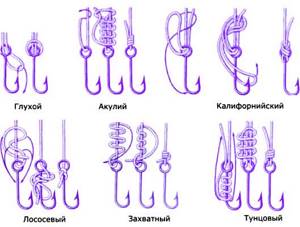
The Hangman's Knot is one of the strongest knots for lures and hooks.
The Snelling A Hook is a pure hook knot that holds the line very firmly and is somewhat more difficult to knit than others.
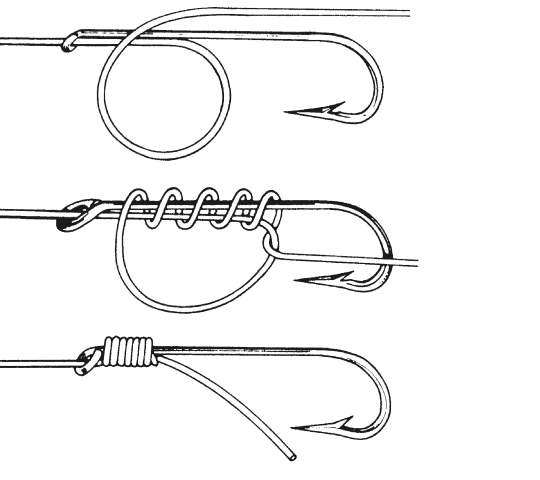
The turtle knot is a simple and very strong knot for tying eye hooks. Suitable for tying a hook in a drop shot rig.
Additional nodes
There are several ways to further secure the thick end of the undergrowth, which is quite important. You can make a loop on the “leader” with your own hands, and there are two ways to do this. The first one is the following:
- to begin with, the thick end of the cord is folded in half to make a loop;
- in the same area where the loop is formed, a regular double knot is tied;
- holding the loop with your fingers and the resulting “tails”, you can tighten the knot, but before that you need to wet it.
There is another way, which is as follows:
- a wide loop is still made, and the tip is retracted behind the main part of the cord;
- After this, another loop is wrapped around the main part, and the short tip is thrown over the gap formed by two loops, and at the intersection you need to hold the entire structure with your fingers;
- The last step is to pull the smaller loop through the larger one and tighten, after which the knot is considered complete.
Installation of fly fishing gear
When assembled, such gear has the following appearance.
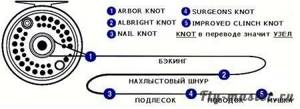
The numbers indicate the types of nodes that are used to connect the components. The most common type of knot for attaching cord or backing to a reel is the arbor knot.
As you can see from the figure here, this knot is quite simple. In this case, another knot is additionally tied at the end of the cord or backing in order to increase the strength of the connection.
Next you need to tie the cord to the backing. For this purpose, the use of a special albright knot is provided.
Tie it like this:
- Fold the cord in half and hold the loop with two fingers.
- Thread 30 centimeters of backing inside the loop.
- Wrap the backing around the folded cord and thread it back through the loop.
- Tighten the knot.
Next, the cord needs to be tied to the undergrowth. A nail knot is usually used for this.
Nowadays, in most cases, there are special loops on the cord and on the pendant for a loop-to-loop connection. If they are not there, then you can use this node.
How to connect it is clear from the drawings.
Here, a small tube is used as an auxiliary tool, which is then removed.
Next you need to attach the leader to the leash. For this, a double surgeon's knot is used. It is very simple and at the same time very reliable.
To increase the strength of the last knot, it needs to be wetted before being completely tightened.
Now to finish installing the fly fishing gear, all that remains is to attach the fly to the leader. There is also a special node for this purpose. It's called improved clinch knot. It is also quite simple and yet reliable.
It is recommended to wet it before finally tightening it.
Composition of fly fishing gear
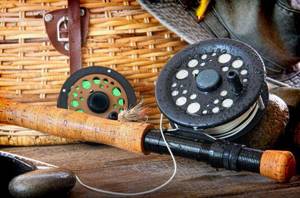
The success of the entire fishing depends on how correctly the tackle is assembled. It is important not only to choose the right components, but also to arrange them into a single ensemble. You should start by analyzing the list of elements required for fly fishing. So, the composition will include the following components:
- Blank (the rod itself). The basis for which the most demands are placed on power, strength, length and other qualities.
- Coil. It should be comfortable and functional.
- Cord. A responsible, albeit auxiliary, part that connects the different elements that will make up fly fishing tackle for beginners in finished form.
- Undergrowth with bait.
Additional components may also be required. They may be a hindrance for novice fishermen, but they should have some idea about this area. In particular, these can be carabiner connectors, floats and leashes. They simplify the fisherman’s task, although they require skillful handling.
conclusions
In the end, it is worth noting that the number of knots that you need to be able to tie in order to use fly fishing gear is quite large. However, sometimes questions arise, for example, how to untie the “stubborn knot” of fly fishing.
Experienced fishermen know that time is of the essence when fishing. Therefore, being able to untie a knot quickly is just as important as knowing how to tie it. First, you need to pry up part of the knot to make a loop. To do this, specialists very often use the simplest devices, for example, a sewing needle. She is very helpful in such matters. Once the loop is large enough to pull, it will be very easy to untie the knot. You need to look exactly where the cord or wire goes and pull it out.
Fly fishing knots are a staple, so knowing how to tie and untie them is very important.
Coil selection and configuration
For fly fishing, there are three reel options to consider: regular, automatic and multiplier. At first, you should try fishing with conventional models, and then move on to more complex versions. But it is important that the reel is equipped with an adjustable brake. With the help of such an accessory, fly fishing tackle for beginners will make the fishing process effective and convenient. Otherwise, there are no special requirements for the reel, but it is recommended that it have a line holder, without which you will have to form a backing cord. Many budget models do not have this feature, so this nuance should be taken into account.
